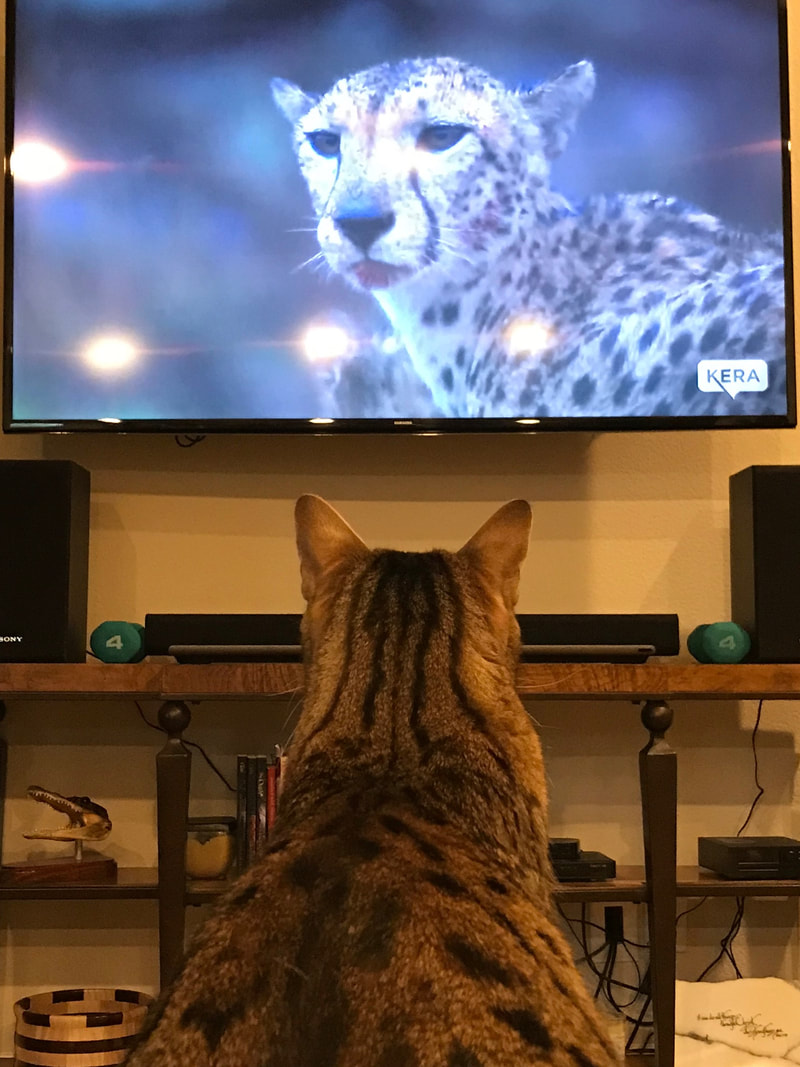Archived Blogs
 My clock’s battery stopped working so I took it off the wall in order to replace it. It’s an oversized clock but it runs on two little AA batteries. I used a screwdriver to pry the back off the case and a few minutes later, I thought I was back in business. But when I hung it back up, it was obvious I had a problem. In turning the clock over, I damaged the mechanism. While the longer hand still counted the minutes, the smaller hand was not working. In fact, no matter where I’d place the hour hand, gravity would pull it to 6 o’clock. It’s frustrating when you have a certain expectation and it doesn’t get fulfilled. I figured I would have to throw the whole thing away. But then I noticed something… As the minute hand rotated around, it would hook the edge of the hour hand and, with incremental ticks, carry it to the top of the clock. At just a few minutes past the hour, the minute hand would drop its hold. Like a pendulum, the hour hand swung to and fro like some crazy time piece from Alice in Wonderland. It was hypnotizing. I kept it on the wall and found myself waiting for each hour to pass so I could see the arm make its wild swings and then come to a rest again. It was unexpected, this event, and it made me think of a poem I’d received from a mom of a special needs child years ago. Both are reminders to enjoy the life you’re living, even if it’s not what you expected. Welcome to Holland BY EMILY PERL KINGSLEY I am often asked to describe the experience of raising a child with a disability – to try to help people who have not shared that unique experience to understand it, to imagine how it would feel. It’s like this… When you’re going to have a baby, it’s like planning a fabulous vacation trip – to Italy. You buy a bunch of guidebooks and make wonderful plans. The Coliseum. The Michelangelo David. The gondolas in Venice. You may learn some handy phrases in Italian. It’s all very exciting. After months of eager anticipation, the day finally arrives. You pack your bags and off you go. Several hours later, the plane lands. The stewardess comes in and says, “Welcome to Holland.” “Holland?!?” you say. “What do you mean Holland?? I signed up for Italy! I’m supposed to be in Italy. All my life I’ve dreamed of going to Italy.”
But there’s been a change in the flight plan. They’ve landed in Holland and there you must stay. The important thing is they haven’t taken you to a horrible, disgusting, filthy place full of pestilence, famine and disease. It’s just a different place. So you must go out and buy new guidebooks. And you must learn a whole new language. And you will meet a whole new group of people you never would have met. It’s just a different place. It’s slower-paced than Italy, less flashy than Italy. But after you’ve been there for a while and you catch your breath, you look around…and you begin to notice Holland has windmills…and Holland has tulips. Holland even has Rembrandts. But everyone you know is busy coming and going from Italy…and they’re all bragging about what a wonderful time they had there. And for the rest of your life, you will say, “Yes, that’s where I was supposed to go. That’s what I had planned.” And the pain of that will never, ever, ever, ever go away…because the loss of that dream is a very, very significant loss. But…if you spend your life mourning the fact that you didn’t get to go to Italy, you may never be free to enjoy the very special, the very lovely things…about Holland. *** ©1987 BY EMILY PERL KINGSLEY. ALL RIGHTS RESERVED.
1 Comment
I grew up in Philadelphia where The Constitution was said with the same reverence as the Bible. We took school trips to the city, went on guided tours of historic buildings and memorized details for the test that would follow.
The Declaration of Independence was written in 1776 and was designed to justify our separation from British rule. The Constitution was written in 1787 and was designed to be the law of our new country. But, these facts held no importance to me, I was more interested in cell structure and mitosis. And I was working on the premise that these men had done a good job and created a timeless document that would serve us for all eternity. But then I learned about Heidi Schreck and her Broadway performance of What the Constitution Means to Me. During her teenage years, Heidi toured the country speaking about the Constitution. In fact, she made enough money doing this that she was able to pay for her own college education. She’s been studying this document for a long time so I have to believe she knows what she’s talking about. She points out that the Constitution has positive and negative rights. Negative rights protect us from our own government becoming too powerful. Positive rights, like the right to an education, help our citizens to succeed. Sounds pretty good, so what’s the big deal? She explores the document and how it relates to her family, especially the women. She argues that women weren't always protected as well as they should have been. The Equal Right Amendment was a proposed amendment that was supposed to give equal legal rights to all citizens regardless of sex. But it never passed. Alice Paul, a suffragist, initial wrote a version that said “Men and women shall have equal rights throughout the United States and every place subject to its jurisdiction.” Despite being in every Congressional session for the next 20 years, it never passed. In 1943, the words were changed to: “Equality of rights under the law shall not be denied or abridged by the United States or by any State on account of sex.” The ERA amendment was gaining traction when Phyllis Schlafy (1924-2016) stepped in the ring. Schlafly was vigorous in her objection to the potential amendment and she was effective at bringing it to a halt. She claimed that if equal rights were granted women would be forced to go to war, they would lose their rights to child support and alimony and our society would collapse. But not to worry. Surely there are protections for women in other places? The Fourteenth Amendment is supposed to allow equal protection under the law for all citizens. An article from the Atlantic said: In an interview with California Lawyer magazine, Supreme Court Justice Antonin Scalia seemed to suggest that the Constitution does not protect women from gender-based discrimination. "Certainly the Constitution does not require discrimination on the basis of sex. The only issue is whether it prohibits it. It doesn't. Nobody ever thought that that's what it meant. Nobody ever voted for that," said the famously conservative justice, adding, "If the current society wants to outlaw discrimination by sex, hey we have things called legislatures, and they enact things called laws. So should we be pursuing equal rights now? Abigail Adams, in a letter to husband John Adams, warned “Do not put such unlimited power into the hands of the Husbands. Remember all Men would be tyrants if they could.” And what about RBG (Ruth Bader Ginsberg). What does she say? You can hear for yourself here. RBG is famous for her support of equal rights...for everyone. Years ago I decided that I wanted a pet, specifically a dog. But I also needed a pet that didn’t require a lot of care. So I opted to get a cat that was rumored to act somewhat like a dog. Bengal cats are the result of the successful pairing of a wild cat (Asian Leopard) and domestic cat. They have broad heads, high cheekbones and the tips of their ears are rounded. The best part is the spotted or swirled marble patterns on their fur, reminders of their wild ancestry. Available information on this cat said they were supposed to go on walks, fetch toys, give a high-five and even swim in the pool with their owners. Practically a dog. Tass is short for Catastrophe. Soon after she arrived, she climbed up the drapes and couldn’t get down. Next she disappeared into the fireplace and then ran around the house scattered soot all over the furniture and rugs. My husband started calling her Tass-hole. I’ve not been successful in any training or dog-like activities. When I put a leash on her, she rolled on the ground like she was demon possessed. When I throw something to fetch, she pounces on it, covers it with her body, and then casually licks her paws and looks bored. I’m not doubting that Bengals are smart, however. Tass learned to flush the toilet by herself. The first time she did this, it was nighttime and my husband was traveling. I can’t tell you how unnerving that was. I’m alone, there’s a stranger in the house…and he’s using the potty. Tass has spent considerable time training us in her routines. In the mornings, she likes to be fed, receive a back rub, and then let outside to our small backyard. She walks the perimeter of the patio surveying her kingdom and monitoring the birds. Monday was a bit different. Seconds after she went outside I heard her screeching. I flew out the door and was shocked to see two foxes attacking her. (To be honest, she probably instigated it, she’s pretty territorial and she’s been watching a lot of nature tv shows lately) Tass was displaying some ninja-like moves that were faster than my eyes could follow but I could certainly hear her. Being a professional and trained to deal with emergencies, I did as you’d expect. Ran outside in my bathrobe, screaming loud enough to wake the neighbors while waving my hands up in the air to look intimidating. It worked. The foxes disappeared and I carried Tass inside. She had blood on her paws but not a single scratch. Ninja Cat. Now Tass is on quarantine for rabies. Rabies is some pretty serious business. Raccoons, skunks, bats and you guessed it...foxes are carriers and it’s universally fatal. Symptoms start with fever, headache and confusion. As the victim worsens, they experience hallucinations, paralysis, hypersalivation (over producing saliva) and hydrophobia (fear of water). Tass has to get a series of shots and she’s on house arrest. She’s bitter about her incarceration and spends a lot of time meowing her frustration. It’s gonna be a long quarantine. Meanwhile, the city put out a cage to catch the culprits but we caught this guy instead. Look at the teeth on that handsome guy!
I went to the Tulsa Ballet last weekend and saw Tchaikovsky: The Man behind the Music. You remember him, right? He’s the Russian composer who created the music for The Nutcracker and Swan Lake. Before the actual show, they had an informal question and answer period where the choreographer, Ma Cong, described how this particular ballet came to be. It was fascinating. Pyotr LLyich Tchaikovsky’s life was complicated, just a quick glimpse on Wikipedia confirms that. And the history written about him is not always accurate. In some accounts, his mother was cold and uncaring while in others, she was devoted to him. What a majority of biographies agreed upon was that Tchaikovsky was a homosexual. This was so unacceptable in 19th century Russia that the Soviets erased or changed a lot of the references of same-sex attraction in their literature. (and you thought the censorship in George Orwell’s 1984 dystopian book was far-fetched) A team was formed and was responsible for bringing the story to life. A composer, Oliver Peter Graber, chose music from what was mostly Tchaikovsky’s own works, with the goal of matching the theme of each act. Tracy Grant Lord designed peacock-hued shimmering dresses and buttoned jackets with rows of shiny buttons—all reminiscent of the time period. A Russian historian acted as a consultant and the artistic director, Marcello Angelini, developed the concept and brought it to life. The lead was a male and I realized that I’m used to seeing ballerinas being in the limelight. I learned that we don’t even have a term for a ‘star’ male ballet performer. In Italy, A ballerino is a term used for a male lead but as far as I know, we don’t have a similar title to recognize a male with exceptional talent. This guy deserved a title—he was brilliant. Have females always dominated ballet? Nope. In Renaissance times, only men danced. This is not surprising because only men performed as actors too. When women did show up on stage, heavy full skirts impeded their ability to perform some of the dance moves. Men, in their breeches, had more freedom. Jean Balon, a ballet virtuoso, was known for his ability to ascend without effort and land gracefully. The word balloon, meaning springiness, was derived from his name. It wasn’t until the 1800’s that female dancers started to become more popular. (Coincidentally, that was about the same time that their skirts were shortened.) Women were considered to be more ethereal and ballets such as Giselle and La Sylphide highlighted their dancing styles. Female dancers have continued to be the focus of a host of popular ballets like Swan Lake and The Sleeping Beauty. But maybe that’s going to change and we will see more male dominated ballets that allow more demonstrations of technical prowess and strength. Times are changing… So what happens next to this new ballet? Videos of the production were sent around the world. Representatives from different troupes will watch the same show I did. And then they will decide whether to bring the show to their own troupe. Ma Cong, the choreographer, would go to each city and help cast from their own dancers for each role. And that’s how a new ballet is born! image from Tulsaballet.org.
|
Archives
October 2020
Categories |
COPYRIGHT 2017 SUSAN BADARACCO | Site Credits









 RSS Feed
RSS Feed